Cooking with Preschoolers –The November Freebie
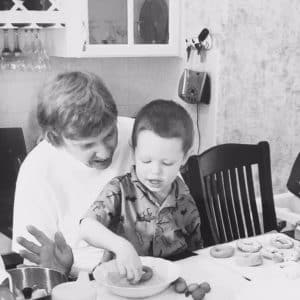 When I think back to my childhood, I always end up in my grandma’s kitchen. I can remember the sound of the spaghetti sauce simmering away on the stove, and I can smell the cherry pie baking in the oven. Grandma would always let us taste the sauce as it cooked and ask us what it needed. “More vanilla!” I’d say, because I thought anything that delicious must have vanilla in it. Even now, as the mom of teenagers, so many of my memories of their childhoods are in different kitchens, mine, my mom’s, or my grandmothers’. So why is it that these memories are so vivid for me? I think it’s because food and cooking involve all of the senses–it involves the whole body. And that’s also why I think cooking with preschoolers is so important.
When I think back to my childhood, I always end up in my grandma’s kitchen. I can remember the sound of the spaghetti sauce simmering away on the stove, and I can smell the cherry pie baking in the oven. Grandma would always let us taste the sauce as it cooked and ask us what it needed. “More vanilla!” I’d say, because I thought anything that delicious must have vanilla in it. Even now, as the mom of teenagers, so many of my memories of their childhoods are in different kitchens, mine, my mom’s, or my grandmothers’. So why is it that these memories are so vivid for me? I think it’s because food and cooking involve all of the senses–it involves the whole body. And that’s also why I think cooking with preschoolers is so important.
Let’s face it, families today are busy. We rush from one thing to the next, and lots of us find it hard to sit down to a meal together as a family, let alone take the time to involve our four year old in the cooking process. That’s where we teachers have to come in! I know what you’re thinking. There are so many reasons why cooking with kids is hard in a classroom. Many of us don’t have access to a kitchen, for one! And it’s tough to find the budget to prepare food for 15 kids! I have definitely been there! The first school I worked at, a public school, didn’t have a kitchen at all. So I had to be creative!
No kitchen? No problem! You can use the following to do cooking activities with your students:
- Electric skillet
- Microwave
- Toaster oven
- Electric griddle
- Blender
- Popcorn maker
- Crockpot
- Bread Machine
- Instant Pot
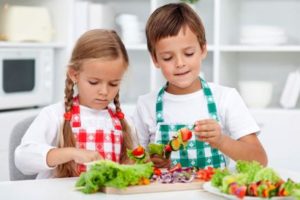 If you don’t have these items in your own kitchen to bring to your classroom, you can always find them at garage sales for relatively cheap prices.
If you don’t have these items in your own kitchen to bring to your classroom, you can always find them at garage sales for relatively cheap prices.
So that brings me to the next obstacle…the cost. This is a tough one to get around, but here’s what I suggest.
- Ask parents to send in the food items you need.
- Look for recipes that don’t have a lot of ingredients.
- Shop at discount stores like Aldi and Walmart.
Consider setting up a bake shop! My last school had a bake shop every Wednesday. They would hand out a “menu” with the item of the week on Monday so that staff would know what was being served. Then, they took orders so they would know how many to make. They then delivered and sold the items for .75 cents. Not only would this be an excellent way to offset your costs, but think of all the learning objectives you can cover!
Tips for cooking with preschoolers
- Establish safety rules from the very beginning. Make sure to go over them, but also have a visual for reference. This example came from TheAutismHelper.com.
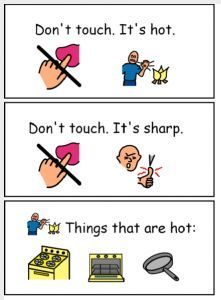
-
-
- Make up a short stirring song. Mine goes “Stirring and stirring and stirring it up. Stirring and stirring and stirring and stop!” Everyone gets a turn to stir, but when the song is finished, so is their turn. This will help to keep the party moving!
- Pass around ingredients and give children a chance to see and smell them. I like to write down some of the things the kids say!
- Print a recipe for each child to take home. I always like to include pictures so that children can help me “read” the recipe. Here are some I’ve made for my class, but lucky for you, the Read It Once Again curriculum does all the work for you as you’ll see in our free activity!
-
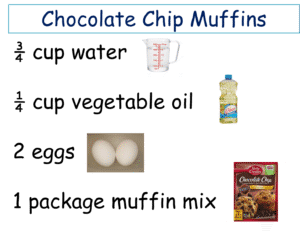
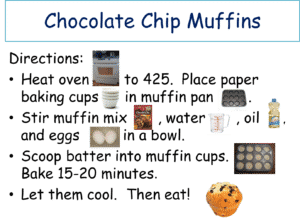
-
-
- Make sure that you have all of your ingredients and utensils set up and ready to go! Cooking already has a lot of wait time for kids, no need to add more by having to search for materials.
- When possible, try to have kid-friendly cooking utensils available. There are lots of safe options for knives, peelers, etc available at kitchen stores and online.
-
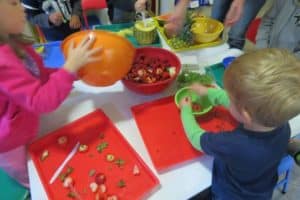
-
-
- Be aware of allergies and special diets, and plan accordingly. Last year, everything I made was gluten-free and dairy-free, and we cooked a lot! Pinterest was my friend!
- Ensure that parents understand the objectives for cooking lessons. It’s not just about making something to eat! I always try to send home something that talks about the activity and what objectives it covered. Pictures of the kids are always a nice touch!
-
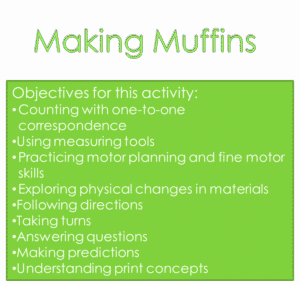
-
-
- Keep all of your recipes from the year and make a class cookbook. The class that did the bake shop at my school last year printed a book of their recipes and sold it to parents. All of the proceeds went to Make a Wish! Click the picture below for a template available for purchase on Teachers Pay Teachers.
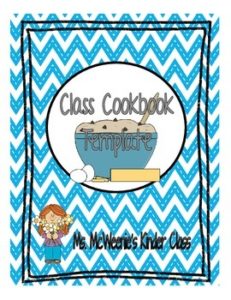
- Keep all of your recipes from the year and make a class cookbook. The class that did the bake shop at my school last year printed a book of their recipes and sold it to parents. All of the proceeds went to Make a Wish! Click the picture below for a template available for purchase on Teachers Pay Teachers.
-
Keep in mind that cooking activities don’t have to result in something to eat. You can make playdoh, slime, salt dough, soap, and other sensory and craft materials. You can also make things like bird feeders or milk bones for pets or therapy dogs.
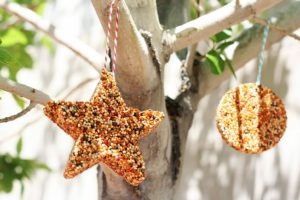
Hands on activities like cooking appeal to all different learning styles. As part of each Read It Once Again unit there are cooking activities included that cover a variety of learning objectives including language skills like naming 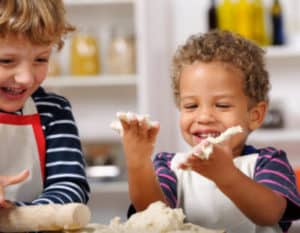 ingredients and materials, describing observations, and following directions. There are also loads of cognitive skills addressed through cooking like counting, sequencing, color recognition, measurement concepts, print concepts, and scientific investigation. And don’t forget all of the fine and gross motor skills that you can work on while cooking! Cooking with kids is especially beneficial because it is a bonding time, and it presents all kind of social and life skills training opportunities. Kids are learning things that will benefit them for years to come! Plus, if you’ve got picky eaters (and who doesn’t) a child is more likely to try a new food if they have had a hand in preparing it themselves.
ingredients and materials, describing observations, and following directions. There are also loads of cognitive skills addressed through cooking like counting, sequencing, color recognition, measurement concepts, print concepts, and scientific investigation. And don’t forget all of the fine and gross motor skills that you can work on while cooking! Cooking with kids is especially beneficial because it is a bonding time, and it presents all kind of social and life skills training opportunities. Kids are learning things that will benefit them for years to come! Plus, if you’ve got picky eaters (and who doesn’t) a child is more likely to try a new food if they have had a hand in preparing it themselves.
Okay, so I know you’ve been waiting for it! The November freebie! You’re going to love this one! You know why you’re going to love it? Because all of the stuff I told you about just a few paragraphs before has already been done for you. It lists all of the materials you’ll need, an ingredient list, and directions. Plus, there are visuals in there for your kiddos. All you have to do is print!
 Loading...
Loading...
Sure, cooking activities take a lot of forethought and preparation. And yes, they take a lot of time when you have 15 little helpers. And of course there are going to be messes. But isn’t it worth all of those little inconveniences when you realize that these activities are building new skills and forever memories that will stay with your friends for a lifetime?
Tell us what you’ve got cooking in your classroom!



